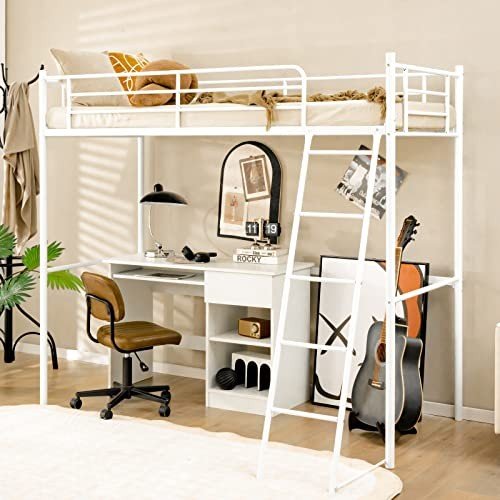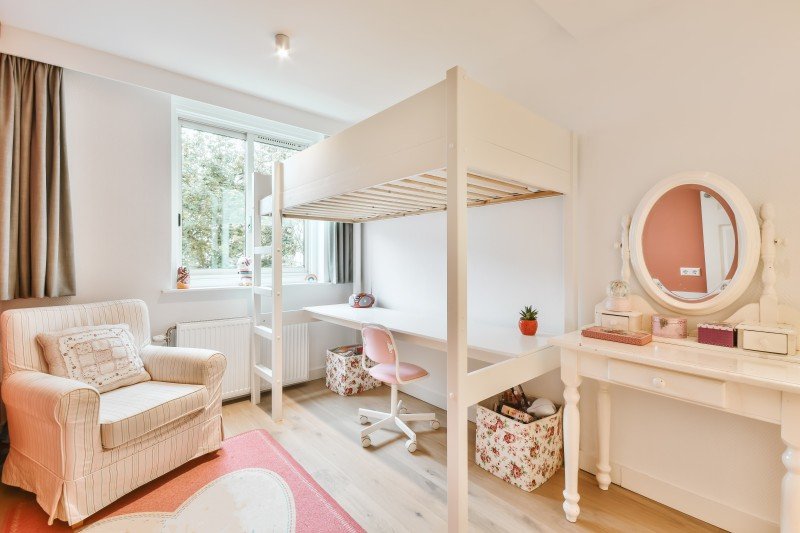Don't Make This Silly Mistake On Your Bunk Beds
페이지 정보
작성자 Sal 작성일25-09-06 20:53 조회12회 댓글0건본문

Exploring Bunk Beds: A Comprehensive Guide
Bunk beds have long been a staple in kids's bedrooms, dormitories, and even homes with restricted space. Not only do they provide a useful sleeping service, but they also produce a fun and imaginative environment for kids and a great space-saver for adults and households. This article will explore everything you need to understand about bunk beds, from types and materials to safety ideas and buying recommendations.
Tabulation
- Kinds Of Bunk Beds
- Traditional Bunk Beds
- Loft Beds
- Triple Bunk Beds
- L-Shaped Bunk Beds
- Material Options
- Wood
- Metal
- Safety Considerations
- Purchasing Guide
- FAQs
Types of Bunk Beds
Bunk Beds For Adults Uk beds are available in numerous styles to fit various needs and choices. Here's a breakdown of the most typical types:
Conventional Bunk Beds
Standard bunks generally feature 2 beds stacked vertically on top of one another. These beds are ideal for siblings sharing a room or for taking full advantage of sleeping space in guest spaces.
Loft Beds
Loft beds stand likewise to standard bunk beds however do not have a lower sleeping location. Rather, they often integrate a desk or seating area beneath, making them a great option for small rooms requiring multifunctionality.
Triple Bunk Beds
Triple bunk beds are created for 3 residents, with beds stacked in a three-tier configuration. These are less typical however can be a fun service for big households or slumber parties.
L-Shaped Bunk Beds
With one bed placed horizontally and the other vertically, L-shaped bunk beds are typically geared up with extra features such as desks or storage drawers and can match corner areas in a room.
Comparison of Bunk Bed Types
| Bed Type | Ideal Use | Desc|x|ription |
|---|---|---|
| Traditional | Shared bed rooms or guest spaces | 2 beds stacked vertically |
| Loft | Small spaces needing multi-purpose space | Upper bed with open space below |
| Triple | Large households or sleepovers | 3 beds stacked vertically |
| L-Shaped | Corner or versatile areas | A mix of vertical and horizontal beds |
Product Options
Bunk beds are produced from various materials, with wood and metal being the most common. Each material has its pros and cons.
Wood
- Resilience: Generally robust and can stand up to years of usage.
- Aesthetic Appeal: Offers a traditional look that can blend with different decors.
- Weight Capacity: Typically tougher; can support much heavier weights.
- Drawbacks: May be more expensive than metal options and can be prone to scratches.
Metal
- Toughness: Generally light-weight and simple to move however still strong.
- Modern Design: Often can be found in streamlined designs, making it appealing for contemporary areas.
- Cost-efficient: Usually more economical than wood alternatives.
- Downsides: Can be cold to the touch in winters and might not have the same visual appeal for some purchasers.
Safety Considerations
When it comes to bunk beds, safety can not be overlooked. Here are key safety suggestions to bear in mind:
- Guardrails: Ensure that the leading bunk has guardrails on both sides to avoid falls.
- Sturdy Construction: Check for a strong construct and tough products to endure weight and movement.
- Weight Limit: Adhere to the manufacturer's weight limit for both the upper and lower bunks.
- Ladder Design: Choose bunks with a safe, easy-to-climb ladder and avoid any sharp edges or rungs.
- Age Restrictions: Most producers advise that kids under the age of 6 should not sleep in the upper bunk.
Buying Guide
When shopping for bunk beds, consider the following elements to find the best fit for your needs:
- Space Availability: Measure the room size and ceiling height, ensuring there is appropriate space for the leading bunk.
- Bed Size: Decide between twin, complete, or larger sizes based upon your needs and the size of the space.
- Design Preference: Consider the overall decoration of the bedroom to find an appropriate style.
- Reduce of Setup: Look for a bunk bed that is straightforward to put together.
- Budget plan: Bunk beds can be found in different cost ranges, so identify a spending plan before starting your search.
Frequently asked questions
1. What is the recommended age for kids to sleep on the leading bunk?
Kids aged six and older are typically advised to sleep on the top bunk to lessen the threat of falls.
2. How can I make my bunk bed safer?
To enhance security, guarantee guardrails are appropriately set up and check that the bed is put on a flat surface area. In addition, motivate children to use the ladder thoroughly.
3. Can I transform a bunk bed into two different beds?
Numerous bunk beds are designed to be convertible. Check the maker's specifications for convertibility features.
4. What accessories are available for bunk beds?
Typical devices consist of bed linens, storage drawers, staircases instead of ladders, and tented canopies for an enjoyable visual appeal.

5. How do I preserve my bunk bed?
Regular checks for loose screws or structural stability can help ensure security. Dust the bed routinely and tidy spills immediately to keep the materials in good condition.
Bunk beds are flexible and a space-efficient service for numerous living circumstances, from kids's spaces to guest lodgings. With numerous designs and materials available, prospective purchasers have a wealth of alternatives to think about, ensuring a mix of functionality and aesthetic appeals. By focusing on safety and following the pointers laid out in this guide, individuals can find the best bunk bed that suits their space and way of life, all while developing a pleasurable sleeping environment.
댓글목록
등록된 댓글이 없습니다.

